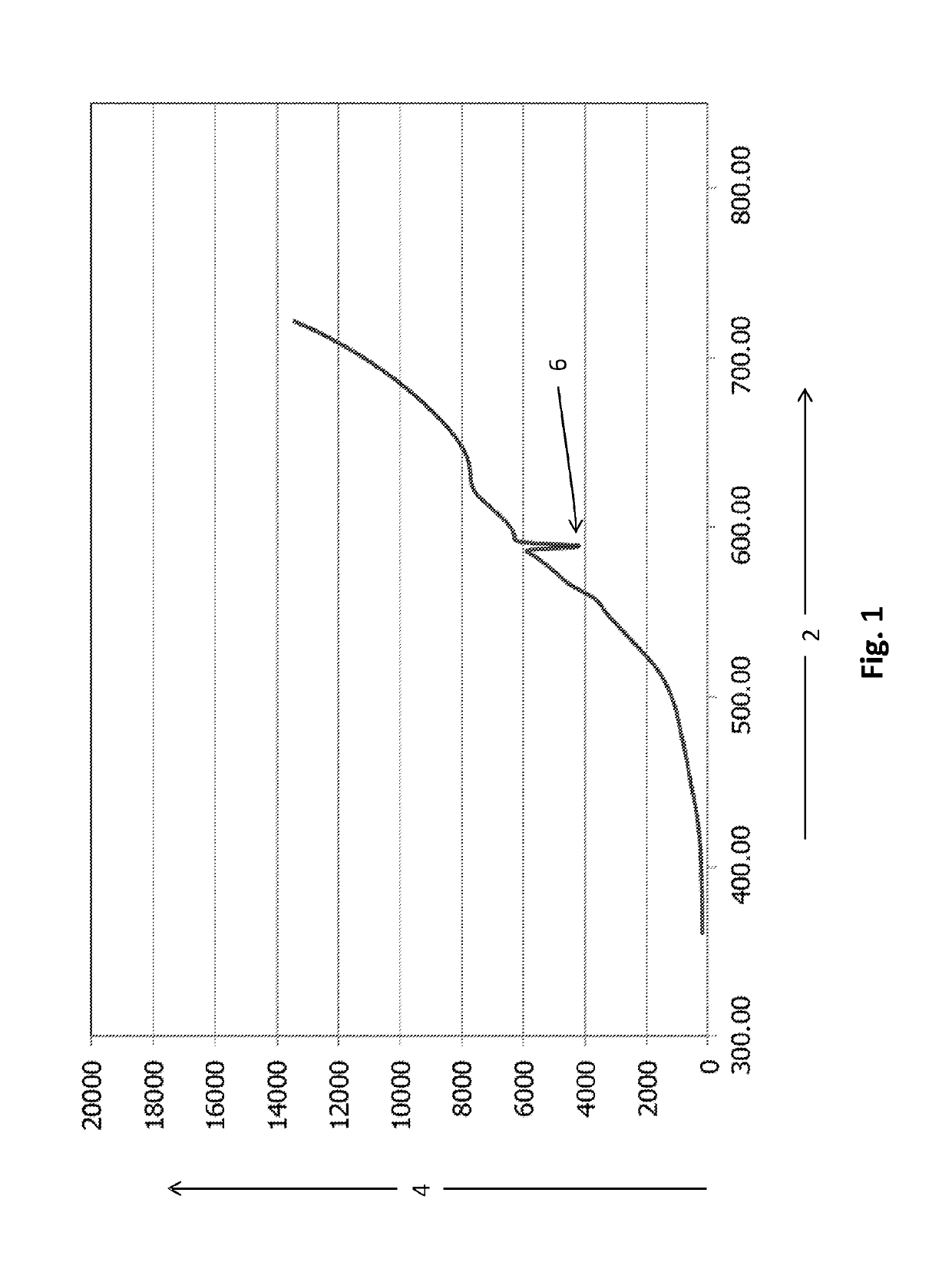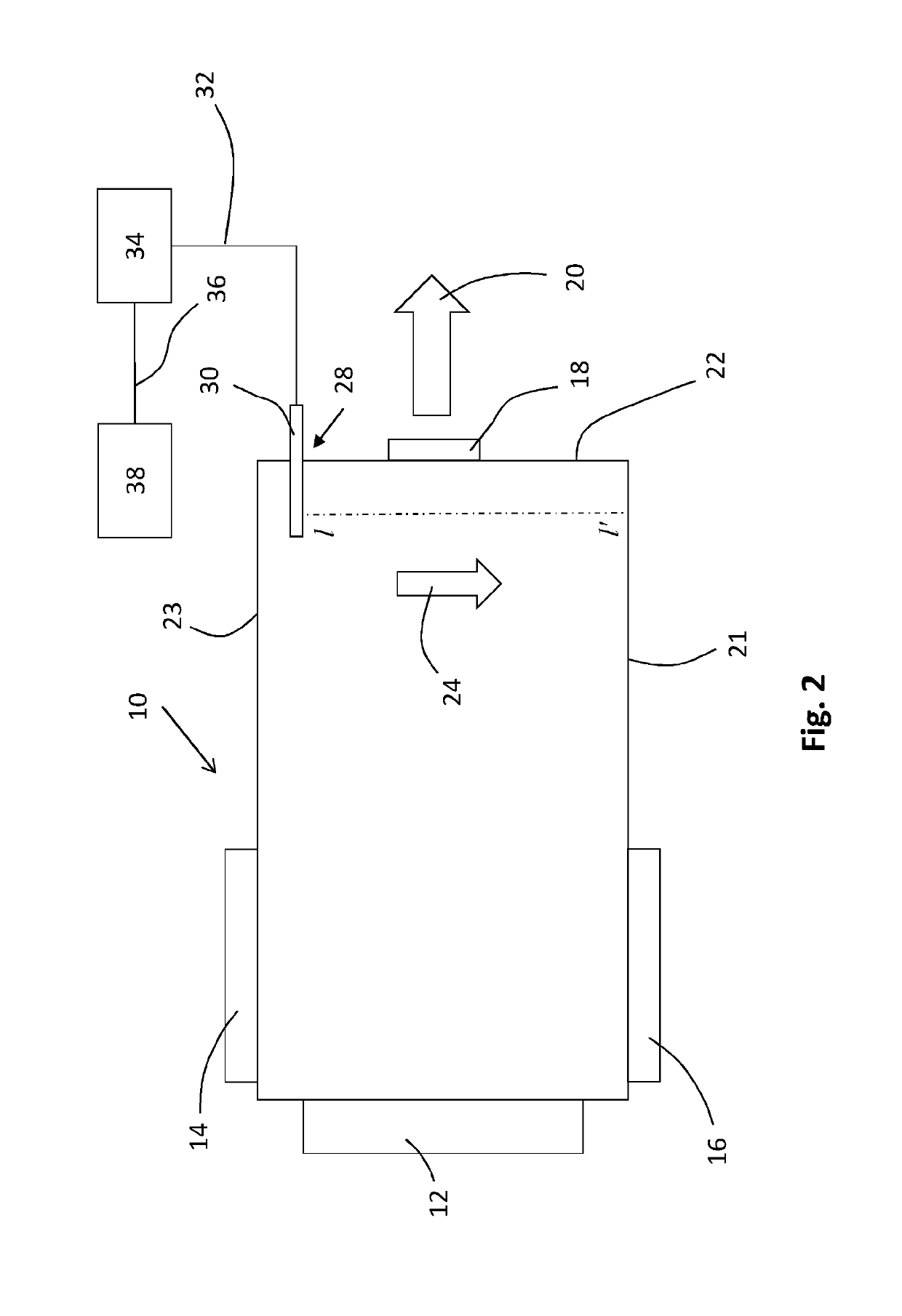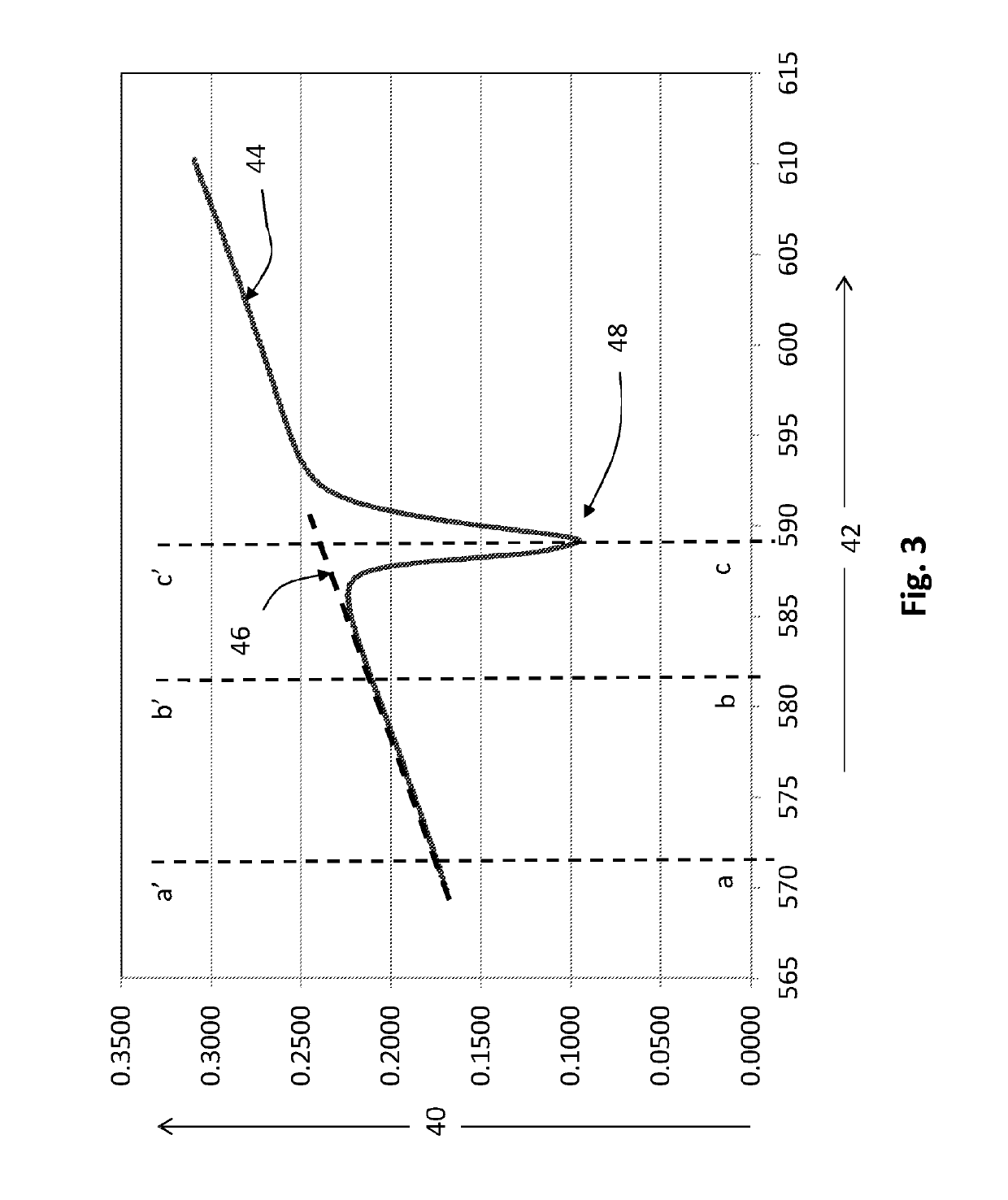Furnace atmosphere measurement
a technology for atmosphere measurement and furnace, which is applied in the direction of optical radiation measurement, instruments, spectrometry/spectrophotometry/monochromators, etc., can solve the problems of high cost of systems, inability to provide continuous monitoring, and time-consuming methods
- Summary
- Abstract
- Description
- Claims
- Application Information
AI Technical Summary
Benefits of technology
Problems solved by technology
Method used
Image
Examples
Embodiment Construction
[0079]FIG. 1 shows the spectral distribution in the refiner end of a float glass making furnace. The temperature at the measuring position is around 1400° C. Axis 2 is the wavelength in nm, and axis 4 is the measured power in watts (W). As can be seen there is an absorption 6 due to sodium atoms in the atmosphere at around 589.5 nm.
[0080]Up to around 600 nm to 640 nm, there is reasonable agreement between the spectrum that is measured and that which is calculated from Planck's Law (other than the absorption around 589.5 nm due to sodium in the furnace atmosphere).
[0081]FIG. 2 shows a schematic representation of a glass making furnace to show the location of the measurement probe for making measurements of the intensity of visible light inside the furnace.
[0082]The glass making furnace 10 has a feed end 12 in which glass making raw materials are fed into the furnace 10 for conversion into molten glass. The furnace has a first burner section 14 and a second burner section 16 for provi...
PUM
 Login to View More
Login to View More Abstract
Description
Claims
Application Information
 Login to View More
Login to View More - R&D
- Intellectual Property
- Life Sciences
- Materials
- Tech Scout
- Unparalleled Data Quality
- Higher Quality Content
- 60% Fewer Hallucinations
Browse by: Latest US Patents, China's latest patents, Technical Efficacy Thesaurus, Application Domain, Technology Topic, Popular Technical Reports.
© 2025 PatSnap. All rights reserved.Legal|Privacy policy|Modern Slavery Act Transparency Statement|Sitemap|About US| Contact US: help@patsnap.com



